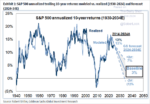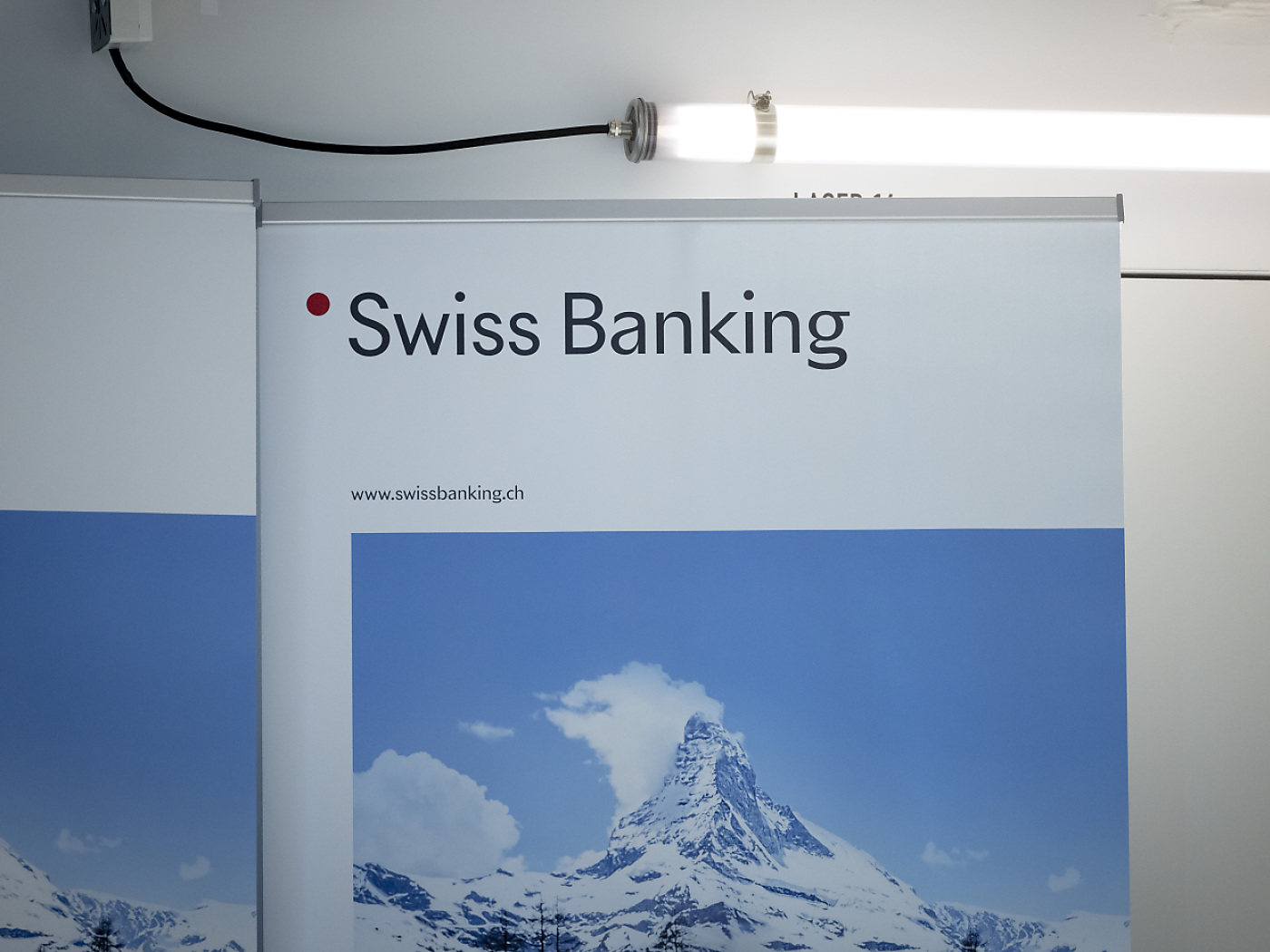Overview: The US avoided a government shutdown, barely, and this eased one of the headwinds that were anticipated. In turn, this is spurring new gains in US interest rates and helping underpin the dollar at the start of the new quarter. The 10-year Treasury is holding above 4.60% and nearing last week's high (4.68%). The two-year yield gapped higher and is near 5.10%. The high from September 21 was almost 5.20%. The Swiss franc is the only G10 currency holding its own against the dollar today. Among emerging market currencies, three currencies are slightly firmer, the Hungarian forint, Polish zloty, and the Taiwanese dollar.
European benchmark yields are mostly 2-4 bp higher, but UK Gilts yields are six basis points higher to 4.50%. Many bourses in the Asia Pacific area are closed for holidays today. The ones that did trade were mostly lower, including Japan and Australia, Taiwan was an exception. After rising by about a third of a percent last Thursday and Friday, Europe's Stoxx 600 is a little softer today, while US index futures are showing a firmer profile. Gold is taking another leg lower. It fell every day last week, falling nearly 4%, its weekly decline since June 2021. After closing a little below $1849 at the end of last week, it has been sold to nearly $1831 today, its lowest level since March. The 200-day moving average is near $1815 and the year's low is about $1805. November WTI peaked near $95 last Thursday and fell to about $90.35 before the weekend. It has come back better bid and is near $91.55 in the European morning. Note that OPEC+ meets on Wednesday.
Asia Pacific
Chinese markets are closed this week for national holidays, but the September PMI was released over the weekend. The takeaway is that the world's second-largest economy is performing somewhat better, even if the underlying structural problems remain. The official manufacturing PMI rose to 50.2 (49.7 in August), the first expansion, above 50 boom/bust level since March. Autos and electrical machinery were particularly strong. The non-manufacturing PMI rose to 51.7 from 51.0. Here, strength was seen in median, communication, financial services, and construction. The property sector is still weak, and exports are falling. Another issue that requires monitoring is that output is outstripping new orders. The composite to a three-month high of 52.0 (from 51.3). Public investment and monetary easing appear to be helping large firms more than smaller businesses. And that is appears to be reflected in the underperformance of the Caixin PMI, where the manufacturing reading slipped to 50.6 (from 51.0) and the services PMI fell to 50.2 (from 51.8), The Caixin composite PMI moved in the opposite direction of the official one, dropping back to 50.9 from 51.7.
Japan reported the results of the Tankan Survey. The takeaway is that Japan's manufacturing sector continues to struggle, and this is especially true of small manufacturers. The Tankan results and confirmation that the manufacturing PMI is at its lowest level since February (48.5 from 48.6 flash reading) will underscore efforts to draft a supplemental budget this month. Tourism may be helping to lift services, drawn in part by the weak yen. The weak yen also may be discouraging outbound tourism, keeping leisure and entertainment spending at home too. Japanese businesses also see the dollar falling to JPY135.75 (~JPY132.45 in the previous survey. The more tax cuts are discussed as part of the package, the more likely an election later this year or early next year will seem. There had been earlier speculation that Prime Minister Kishida wants to secure his own mandate, they faded, only to be resurrected now, despite the low support for the Kishida's government.
Australia's final September manufacturing PMI ticked up to 48.7 from the flash 48.2 reading, but down from 49.6 in August. It has not been above 50 since February. The low was set in April at 48.0 and it has been languishing since then. The Reserve Bank of Australia meets tomorrow, and these is practically no chance of a change in policy. The futures market has not fully given up on another hike in the cycle but see the chances greatest in Q1 24. The Reserve Bank of New Zealand meets Wednesday. The cash target rate is 5.50% (4.10% in Australia). It too will remain on hold. Voting in national election begins today and runs through October 14. A center-right coalition had an early lead in the polls, but the latest batch showed a tighter contest, with current Labor government gaining support. It is possible that the New Zealand First party which has supported center-right and center-left in the past will key to the formation of the next government.
Bank of Japan Governor Ueda said over the weekend that that sustainable 2% inflation goal is not yet in sight and there is still some distance to cover before an exit for easy monetary policy can be contemplated. This, coupled with the US government shutdown averted, has seen the dollar build on its pre-weekend gains. It had fallen to a four-day low around JPY148.55 before recovering to JPY149.50 even though the US 10-year yield eased for the second consecutive session for the first time in more than two weeks. The dollar slightly above JPY149.80 today. Intervention does not seem imminent, and the market may continue to gentle probe for the official pain threshold. The JPY150 level of psychological importance is being approached. Today, there are options for about $730 mln that expire there. Related, the BOJ announced it will buy 5–10-year JGBs on Wednesday after the 10-year yield edged up to a new high (~0.775%), which may have been encouraged by the record of last month's BOJ meeting where an exit of easy monetary policy was discussed. The Australian dollar was greeted with heavy selling after it traded above $0.6500 before the weekend and settled about 1% lower. It has not closed above $0.6500 since August 10. Options for around A$680 mln struck at $0.6500 expire today. The Aussie slipped below $0.6400 but held above $0.6390. A break of that now confirms a rejection of the $0.6500 area and warns the risk of a retest of the year's low set last week near $0.6330. The offshore yuan rose to an eight-day high before the weekend, but the upside momentum faded. When mainland market closed last Thursday for the extended holiday, the dollar was a little below CNH7.30. It is little changed net-net. We continue to see the same forces that are weighing on the yen, a drag on the yuan: policy divergence. Moreover, the PMI will not deter investors from looking for additional easing by the PBOC this year.
Europe
The eurozone's final manufacturing PMI is a reminder of its economic challenges. At 43.4 (unchanged from the flash reading) it is struck in the trough set in July at 42.7. German, Italy, and Spain's manufacturing sectors appear to be stabilizing, but France is deteriorating. Germany's manufacturing PMI stands at 39.6 (39.8 flash). It reached a low in July at 38.8. Italy's is at 46.8, having bottomed in June at 43.8. The French manufacturing PMI is at 44.2, not as weak as the flash reading of 43.6 in September, but it was at 46.0 in August. This is the lowest reading since 2020. Spain's manufacturing PMI rose to 47.7 in September from 46.5 in August. This is the low for the year. Last year's low was 44.7.
The UK's final September manufacturing PMI confirmed the modest improvement to 44.3 (44.2 flash) from 43.0 in August. Still, it has not been above 50 since July 2022. Last week, the UK confirmed Q2 GDP rose 0.2%, but the market sees slower growth for next four quarters according to Bloomberg's monthly survey. Politics may overshadow economics in the coming days. The Tory Party annual conference got underway yesterday. There seems to be two trajectories. First, is Prime Minister Sunak trying to reinvigorate his base ahead of next year's election. Second is the maneuvering of his rivals to replace him if he fails. Separately, even if not totally unrelated, Russia's Medvedev warned that the reported UK decision to train Ukrainian soldiers in Ukraine make them legitimate targets. Sunak has subsequently backtracked and said the proposal is not for the "here and now." This coupled his warning that Germany's factories producing Taurus missiles that may be set to Ukraine are also legitimate military targets speaks to our concern that the war in Ukraine may broaden and escalate. Even if it mostly bluster, Ukraine will soon have long-range missiles and its pilots will be trained by early next year to fly the F-16 fighter jets. The appropriations bill that was approved by both chambers of the US legislature and signed by President Biden did not authorize more funding for Ukraine. Remedial action over the next few days is possible, but the national consensus appears to be fraying, and this says nothing about the strains in Europe, including the possible return of pro-Russia Fico in Slovakia.
The euro was sold ahead of the weekend after reaching the (50%) retracement of the leg down from the September 20 high near $1.0735. That retracement objective was found a little above $1.0610, and the euro peaked a few ticks north of $1.0615. It fell half-of-a-cent from the high in the North America on Friday. It is slipped below $1.0550 in the European morning and a break of $1.0530 re-targets the last week's low a little below $1.0490. There are options for a little more than 1 bln euros struck at $1.0495 that expire tomorrow. There still does not seem to be a climactic capitulation that marks an extreme, like last September. The next important chart area is around $1.04, the (50%) retracement of the euro's rally from last September's low (~$0.9535). Sterling also reversed lower before the weekend, but unlike the euro, it settled lower on the day. It is being pushed through the pre-weekend low (~$1.2180). It does not appear to have bottomed and a re-test on the six-month low set last week near $1.2110 seems likely. The next target is $1.2075, the (38.2%) retracement of the rally from last September's record low near $1.0350 to this year's high set in July near $1.3140 and then $1.20, the measuring objective of the large head and shoulders pattern.
America
With no time to spare, limited spending authorization of the US federal government was extended to November 17. The measures did not provide new funding for Ukraine, as we have noted, and House Speaker McCarthy promised a separate bill to authorize it. However, there is a move underway within the Republican Party to replace him after relying on the Democratic Party to pass the authorization bills. Meanwhile, other important headwinds to the US economy remain. The UAW strike is expanding. Credit conditions appear to be continuing to tighten. The high interest rates and high credit card debt will squeeze the consumer, as will higher energy prices. Student loan debt servicing is resuming. Job growth is slowing, and that likely will be underscored by this week's data, which includes JOLTS and the nonfarm payroll report.
The market has all but given up on a Fed hike next month. The futures market has a less than a 20% chance. The odds of a hike by end of the year are about 40%, down from about 50% three weeks ago. Nine Fed officials speak this week, with Chair Powell (and Harker) participating at a roundtable discussion today. Most views seem to be well known and the general statement is that rates are near or at their peak and they will stay elevated for some time. Meanwhile, the US Treasury will sell $244 bln in bills this week (no coupons) and that does not include the 4- and 8-week bills.
Canada's July GDP stagnating, disappointing economists who had expected a 0.1% expansion after June's 0.2% contraction. The Canadian dollar was punished severely, suffering its largest since day loss since mid-July (~0.65%). The odds of a rate hike were downgraded to about 30% this month from 45% in the middle of last week and around 58% before the end of the year from nearly 78% midweek. The greenback recorded a huge outside up day (trading on both sides of Thursday's range and closing above its high). It met the (61.8%) retracement of the dollar's decline from almost CAD1.37 on September 7 to CAD1.3380 on September 27. It is found near CAD1.3575. The pre-weekend move seemed exaggerated but the Canadian dollar sell-off has carried into today, with the greenback rising a little above CAD1.3600. The risk is that the greenback's downside correction is over, and it may run again toward CAD1.37. Amid risk-off moment and the broad gains, the US dollar approached its 200-day moving average against the Mexican peso in the middle of last week, reaching almost MXN17.82. The dollar has experienced eight bounces this year of more than 2.25% against the peso. The largest was in March around the US banking stress that saw the greenback surge 7.45%. The bounce in September was about 5.75%. and since the September 20 low slightly below MXN17.00, the dollar rose by almost 5% into the middle of last week. At the first sign that it was stabilizing sellers emerged and drove the dollar to MXN17.35 before the weekend, slightly above the 20-day moving average (~MXN17.33). It has stabilized today and some backing and filling looks likely. A move above MXN17.46 cold see MXN17.53-58. As widely anticipated Banxico stood pat last week and continued to signal its intention to keep the target rate at 11.25%.
Tags: #USD,Australia,Bank of Japan,Canada,China,Currency Movement,EMU,Featured,Japan,Mexico,newsletter,Spain,U.K.,US





















